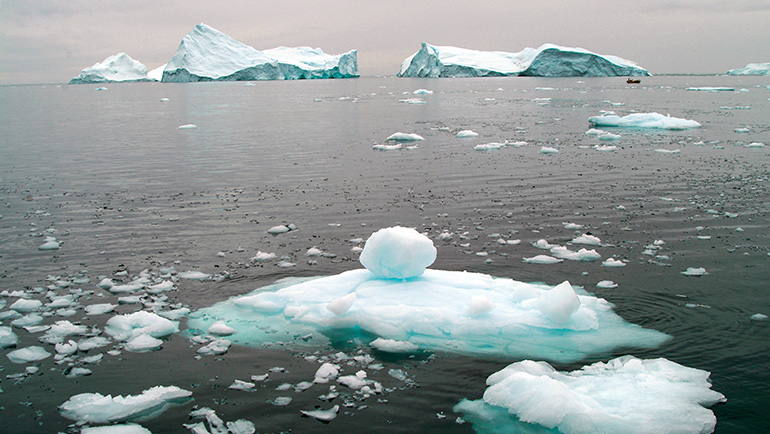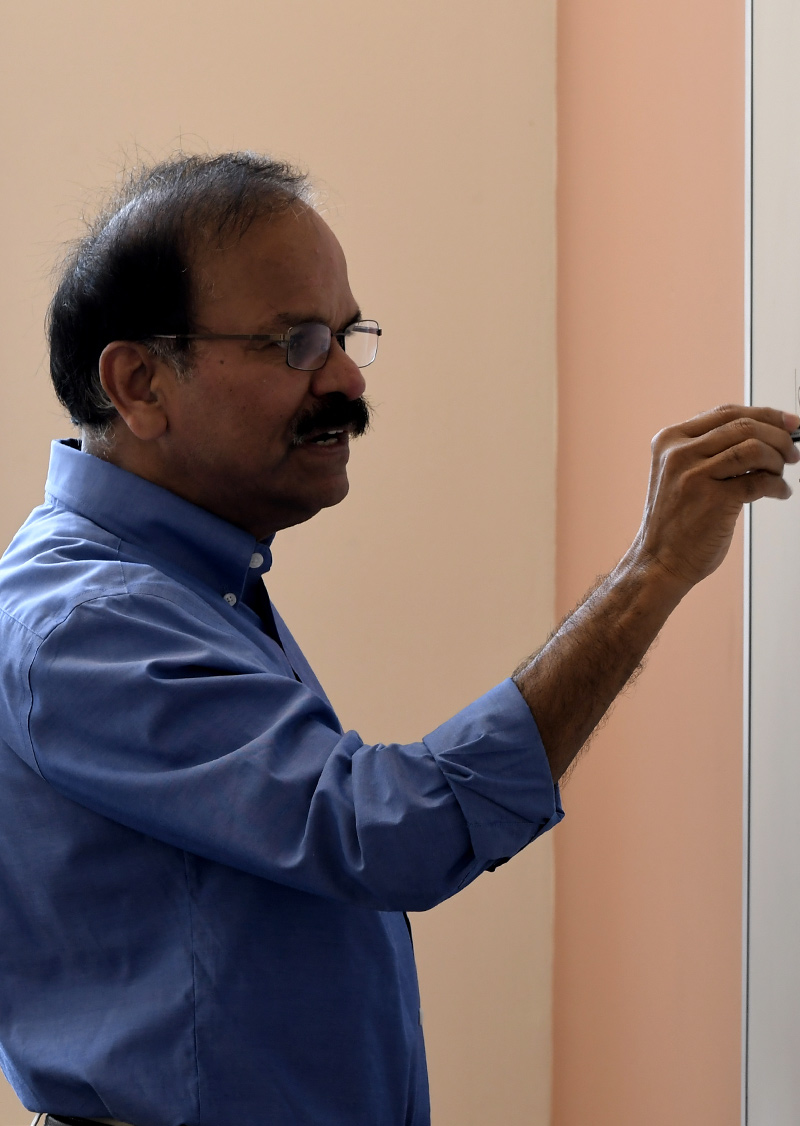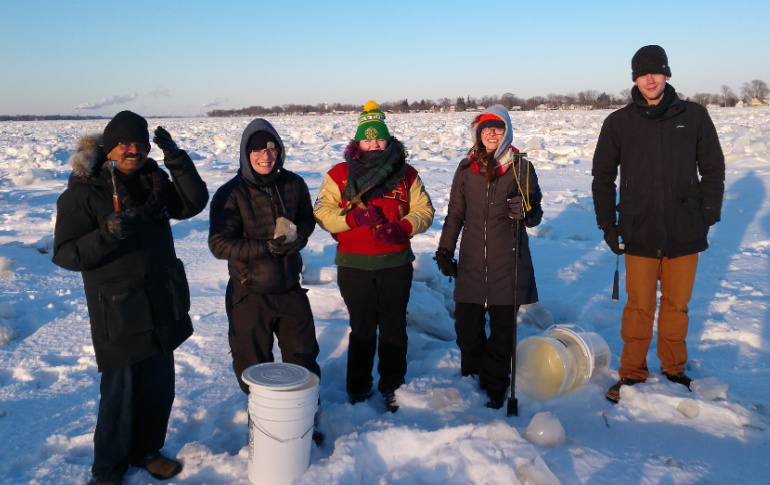
Climate change is transforming the Arctic Ocean in unprecedented ways. One piece of evidence can be seen in the systematic decline in its seasonal ice coverage.
And a recent Wayne State University research team’s analysis of deep Arctic water samples for naturally occurring lead (Pb-210) and polonium (Po-210) isotopes show significant changes in their partitioning between 2007 and 2015.
“Our study shows that the mobility and availability of key elements, such as polonium, lead, iron, zinc, etc. is altered by the climate change in the Arctic,” said Mark Baskaran, professor and chair in Wayne State University’s Department of Environmental Science and Geology in the College of Liberal Arts and Sciences. “With continued declining seasonal ice cover and increasing surface air and water temperature, the albedo, or the fraction of incident sunlight reflected, will continue to decrease. More heat is expected to be added to the surface Arctic waters, leading to further warming.”

The researchers’ publication with their findings — titled “Climate change impacts to the Arctic Ocean revealed from high resolution GEOTRACES 210Po-210Pb-226Ra disequilibria studies” — was recently accepted in the Journal of Geophysical Research-Oceans.
Reversing this trend, Baskaran said, necessitates taking steps to reverse the increase of carbon dioxide (74.4% warming contributor), methane (17.3%) and nitrous oxides (6.2%). “If necessary steps are not taken,” he continued, “a likely scenario is on the changes in the ecosystem due to lack of available key nutrient elements.”
Some of the reasons for these accelerated changes can be attributed to movement of water and pollutants in lakes and surface oceans due to pulse precipitation. In addition, Baskaran said, changes in surface air and water temperatures alter the amount and frequency of precipitation.
“Due to warming, the ice/snow melt on the Arctic’s surface is faster,” he said. “More surface waters become ice-free and prone to a generation of more waves, affecting the mobility of micro- and macro-nutrient elements in the biological productive upper waters. Thus, the ecosystem in the upper waters may be negatively impacted.”
One Wayne State student on Baskaran’s team saw the impact up close.
“Katie Krupp, a master's student, participated in the cruise, starting from Dutch Harbor in Alaska and went up to the North Pole,” Baskaran said. “She collected water, air dust (aerosol), sea ice, melt pond (small pools of open water that form on sea ice in spring and summer), dirty sediment-laden ice floating in surface water, for her master's thesis work. We had another undergraduate and M.S. student who went on an Arctic icebreaker in 2000. Both projects were funded by the National Science Foundation.”

To reverse the continued increase of surface air and water temperature, Baskaran said, there must be a reduction in the release of species that trap greenhouse gases (carbon dioxide, methane, nitrous oxide). In addition, more reliance on renewable energy, reducing consumption of energy sources that release greenhouse gases, along with conscious efforts to reduce energy consumption in general, are some of the possible ways to hasten the decline.
But Baskaran notes that most of the climate changes Earth has seen in the past 650,000 years (seven cycles of glacial advance and retreat) were attributed to “very small variations in Earth's orbit which resulted in small change in the amount of energy our planet received from the sun.”
“The annual increase rate of atmospheric carbon dioxide over the past 60 years is about 100 times faster than previous natural increases,” Baskaran continued. “The current planet warming we are witnessing is too rapid to be linked to changes in Earth's orbit and is occurring roughly 10 times faster than that of the average rate during ice age recovery warming.”
